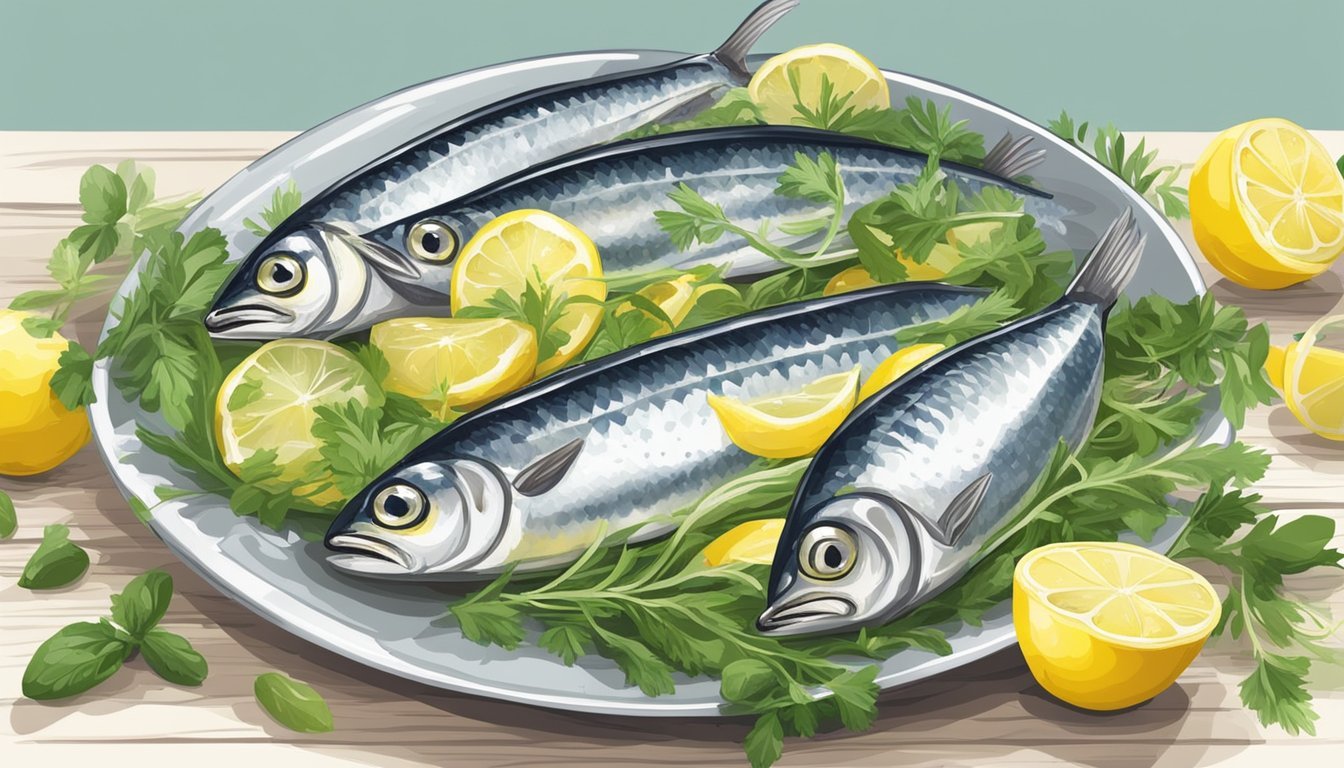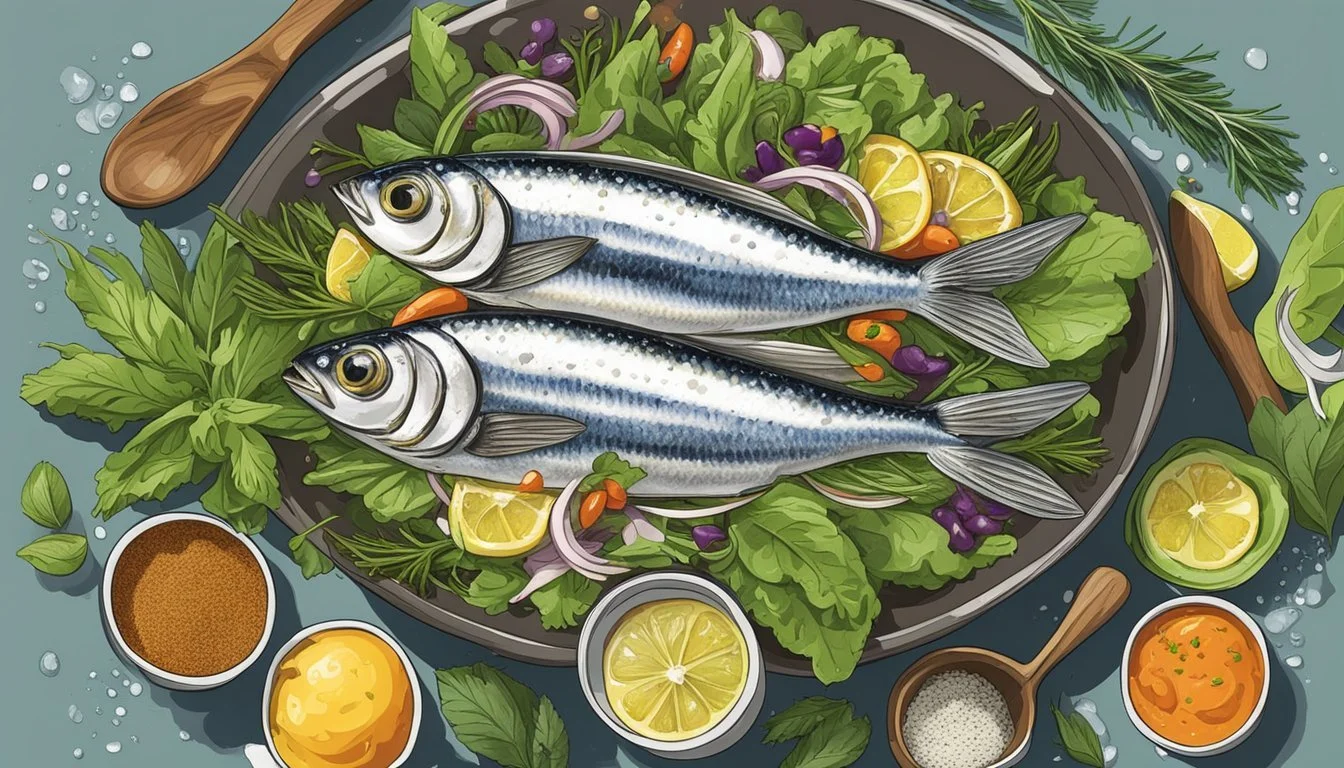Fixing Overly Salty Canned Sardines
Tips for Perfectly Flavored Salads
Canned sardines are a convenient and nutritious option for those looking to incorporate more protein and essential nutrients into their diet. However, the high salt content that often accompanies canned foods can overwhelm the palate and detract from the health benefits. Excess sodium can not only disrupt the balance of flavors but also pose a challenge for individuals managing their dietary salt intake for health reasons.
Addressing the issue of overly salty canned sardines, culinary enthusiasts and health-conscious consumers alike have developed methods to mitigate the saltiness. Rinsing canned sardines under cold water has proven to be an effective first step in reducing the sodium content. Beyond this simple rinse, there are strategies to further balance flavors in sardine-based salads (What wine goes well with salads?), turning a potentially overpowering taste into a harmonious, healthy meal that complements a balanced diet.
Incorporating fresh ingredients known for their ability to pair well with the robust taste of sardines transforms the humble canned fish (What wine goes well with fish?) into a refined component of a nutritious meal. Tomatoes, onions, and herbs, along with the right dressing, can reinvent sardines into a culinary delight fit for any table. By adjusting the seasoning and adding complementary flavors, one can enjoy the full nutritional benefits of sardines without compromising on taste.
Understanding Sardines
Sardines are a nutrient-dense seafood option that offer various health benefits and come in several types and brands. Proper storage and preparation can enhance their taste and nutritional value.
Nutritional Profile
Canned sardines are an excellent source of protein, omega-3 fatty acids, calcium, and vitamin D. Typically, a single can of sardines contains:
Protein: ~20-25 grams
Omega-3 fatty acids: ~1.5-2 grams
Calcium: ~200-300 mg
Iron: ~2 mg
Vitamin D: ~250 IU
Health Benefits
Sardines contribute to bone health and brain health due to their high concentration of nutrients. They are also known for reducing inflammation, thanks to their omega-3 fatty acids content.
Types and Brands
Sardines are available in various forms, including bone-in, skin-on, and those packed in extra virgin olive oil or water. Popular brands often offer wild-caught options and a variety of flavors.
Mercury and Sodium Content
Mercury: Sardines are low in mercury because they feed on plankton.
Sodium: Canned varieties can be high in sodium, used as a preservative, but rinsing can reduce saltiness.
Environmental Impact
Choosing wild-caught, sustainably fished sardines supports marine biodiversity and reduces the ecological footprint associated with seafood consumption.
Selecting Quality Sardines
High-quality sardines should be intact with a fresh smell and packed in water or olive oil without excessive preservatives.
Storing Canned Sardines
Canned sardines generally have a long shelf life and should be stored in a cool, dry place. Once opened, refrigeration is necessary, and the sardines should be consumed within a few days.
Preparation Basics
To fix over-salted sardines, rinse under cold water, and pat dry. Marinate or season with herbs such as parsley, dill, or rosemary to balance flavors.
Culinary Variations
Canned sardines can be enjoyed in a variety of ways, from serving on toast or crackers to being incorporated into salads with capers (What wine goes well with capers?) or anchovies (What wine goes well with anchovies?) and dressed with herbs, spices, and vinaigrettes for varied flavor profiles.
Reducing Saltiness
When dealing with overly salty canned sardines, there are a few effective techniques to reduce the sodium content. These include practical rinsing and soaking methods, strategic flavor pairings with ingredients that counteract saltiness, and the use of fats for creating a balanced taste profile in salads.
Rinsing Techniques
Rinsing: To remove excess salt, simply place the canned sardines under cold running water. Ensure you rinse thoroughly, allowing water to flow over each piece to wash away surface sodium.
Pat Dry: After rinsing, gently pat the sardines dry with paper towels. This step not only aids in reducing saltiness but also prepares the fish for better absorption of dressings and seasonings in your salad.
Soaking Methods
Soak in Water: Immerse the sardines in a bowl of water for a short period, generally around 15 to 30 minutes, which can help to leach out some of the salt.
Duration Effectiveness 15 min Moderate 30 min Higher
Soak in Acidulated Water: Add a splash of apple cider vinegar or lemon juice to the soaking water. This introduces a note of acidity, which not only helps to cut through the saltiness but also adds a layer of freshness to the fish.
Flavor Pairings and Additions
Acidity: Balance the saltiness of sardines with acidic elements such as lemon juice or zest. The tangy flavors not only mitigate the salt but also brighten the salad overall.
Sweetness: Introduce a sweet component, like a honey-based dressing, to counteract the salty flavor. This contrast of sweetness against saltiness can be most appealing.
Herbs: Fresh herbs, like dill or parsley, add a burst of flavor and freshness, further balancing out the sodium in canned sardines.
Creating Balance with Fats
Omega-3 Fatty Acids: Sardines are naturally rich in omega-3 fatty acids, which pair well with additional fats like olive oil for a rounded flavor and texture in salads.
Olive Oil: Use olive oil or infused olive oil as a dressing to tame saltiness. The oil creates a silky mouthfeel and complements the sardines' natural fish oils.
Fish Oil Supplements: While fish oil supplements are not used in food preparation, understanding their health benefits can encourage moderation of added fats to maintain the nutritional integrity of the dish.
Building the Perfect Sardine Salad
The perfect sardine salad strikes a balance between savory flavors and nutritional benefits, utilizing a variety of ingredients that enhance the natural taste of sardines while bringing contrasting textures and flavors to the dish.
Sardine Salad Basics
For the base of sardine salad, one should always start with high-quality canned sardines, ensuring that they are not overly salty. If they are, rinsing the sardines can reduce excess saltiness. Along with the sardines, a good mix of greens—like romaine lettuce, radicchio, and spinach—lays the foundation for a nutrition-packed meal filled with vitamins and other essential nutrients.
Ingredient Selection
When selecting vegetables to include, aim for a colorful variety such as juicy tomatoes, thinly sliced red onion, and diced avocado. The inclusion of these elements not only adds vital nutrients to the salad but also creates a visually appealing dish. For added Mediterranean flair, consider incorporating kalamata olives. (What wine goes well with olives?)
Salad Dressing Options
The dressing is key to balancing the flavors in a sardine salad. Olive oil is a staple for vinaigrette, providing a smooth richness that complements the fish. Experiment with emulsifiers like dijon mustard or miso paste to add depth. Acidity from lemon juice can brighten the dish, while options like mayo or a zesty mustard bring a creamy texture and tang.
Dressing Base Emulsifier Acidic Element Olive Oil Dijon Mustard Lemon Juice Mayo Miso Paste Vinegar
Adding Texture and Flavor
A variety of nuts and seeds can introduce a crunchy texture, elevating the overall eating experience. For those who enjoy a spicy element, a dash of hot sauce or chopped jalapeños can infuse heat. Consider adding a slice of toast on the side or croutons mixed in for additional crunch.
Enhancing Sardine Dishes Beyond Salads
When considering canned sardines, many immediately think of salads; however, their versatility extends far beyond. Here are inventive ways to elevate this protein-rich seafood into varied and delectable meals.
Versatile Sardine Recipes
Sardine recipes can transcend the traditional confines of salad with ease. Incorporating into homemade seafood pizzas as a topping adds a unique sea flavor. Pasta with sardines, garlic, and fresh herbs is another simple yet sophisticated dish that brings out the rich flavor of this cost-effective protein.
Sardine Sandwich Innovations
Customize your regular sandwich or toast options with sardines for a healthy meal. A sardine salad sandwich combines the convenience of canned fish with fresh ingredients like diced celery and a light mayonnaise or yogurt dressing. Spreading the sardines onto crusty bread accompanied by pickled onions provides a gourmet snack or luncheon dish.
Grilling and Cooking Sardines
Exploring different cooking methods can transform sardines. Try grilling sardines for a smoky essence or pan-frying them to achieve a crispy texture, enhancing the fish's inherent flavors. Different cooking techniques, such as lightly smoking the sardines, can introduce variety into weekly meal prep routines.
Pairing With Other Foods
Sardines pair well with a multitude of foods to create balanced diet options. Their bold taste complements acidic ingredients like tomatoes and capers while balancing well with earthy flavors from mushrooms and grains. They also pair nicely with a variety of bread, such as rye or pita, for a hearty and nutritious dish pairing.
Creating Unique Spreads and Dips
Blending sardines into spreads and dips with cream cheese, herbs, and lemon juice can create an appealing appetizer served with crackers or vegetable sticks. A rich, savory tapenade can be made by finely chopping sardines and mixing them with olives, anchovies, and olive oil for a texture-rich spread.
Incorporating Sardines into Diet Plans
Including sardines in a diet is an excellent option for those seeking a high-protein, nutritionally balanced meal that's also cost-effective. Their versatility makes them an ideal choice for those on Mediterranean or ketogenic diets, offering ample opportunities for varied meal prep without sacrificing taste or nutrition.
Conclusion and Additional Tips
In this final section, the article recaps practical advice for reducing excess salinity in canned sardines and explores their nutritional benefits, inventive culinary applications, and the significance of eating seafood like sardines in moderation.
Summary of Tips for Desalting
Rinse Thoroughly: To mitigate saltiness, rinsing canned sardines under cold water before use can be effective.
Balanced Meals: Pairing sardines with less salty ingredients in salads helps balance overall flavor.
Health Considerations in Consuming Seafood
Moderation is Key: While canned sardines are a nutritious seafood option, they should be consumed in moderation to manage dietary sodium.
Omega-3 Content: They provide beneficial omega-3 fatty acids, known for supporting heart health.
Mercury Consideration: Sardines generally have lower mercury content compared to larger fish, making them a safer choice.
Creative Uses and Preservation
Versatile Ingredient: Consider incorporating sardines into pastas, spreads, or as a pizza topping for diverse uses.
Canning: Preservation by canning retains the nutritional value and extends shelf life, offering a cost-effective pantry staple.
Final Thoughts on Sardines as a Staple
Nutrition-Focused: Canned sardines are a nutritious component of many diets, offering essential vitamins and minerals.
Serving Suggestions: For best results, incorporate sardines into meals thoughtfully, respecting their unique flavor and health benefits.







